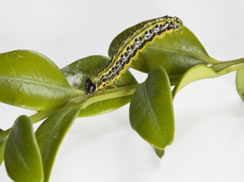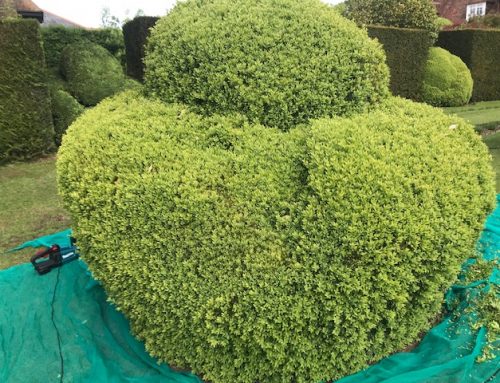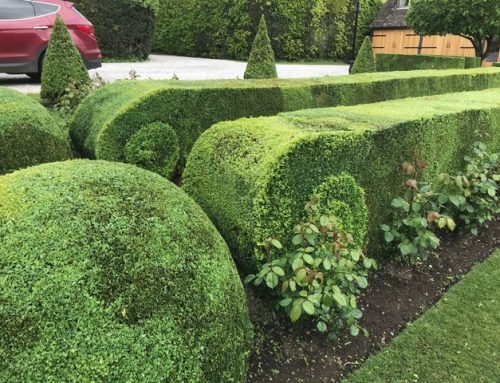The reality about treating Buxus re: Caterpillar damage and Box blight from the Topiarist
There has recently been several articles written about box referencing academic research and I would like to give a practical take on these articles, as a hands on professional with 30+ years experience of growing, cutting and restoring topiary.
During my travels I see many gardens with various Buxus problems, from blight to the latest challenge – the Asian Box Moth / Caterpillar (Cydalima perspectalis) – and many confuse the two problems. The first signs of caterpillar damage are nibbled leaves, webbing (similar to spider) and caterpillar green excrement at the base of the plant and defoliation of leaves. Whereas Box Blight (Cylindrocladium buxicola) is black spotting on the leaves, defoliated leaves and bald patches, i.e. in the top of hedging. I would like to emphasis that both are treatable by professional and retail products.
If you are, or know of, a professional licensed sprayer, you can use Decis for the caterpillar (Cydalima perspectalis). The retail product is Provado by Bayer. There is also a new product which I have not yet tried, but have excellent reports of, by TopBuxus called Xen Tari.
For the organic gardener – Steinernema carpocapsae are pathogenic nemotodes that attack caterpillars and laboratory studies have shown that they will kill the Asian Box caterpillar, but effective control is reliant on high humidity levels around the leaves. The only known natural enemy of the caterpillar is the Asian hornet – which have already entered the UK borders!! Maybe following their food source!
Unlike comments from TV personalities, birds will not touch the caterpillars as they are toxic to birds as a result of eating box (Buxus).
For box blight we recommend TopBuxus Health mix or Bayer Fungus Fighter Plus, both have excellent results. In my field stock I grow many varieties of Buxus, including Microphylla Faulkner, and all are equally susceptible to box blight. Mulching underneath box with either ornamental bracken mulch or for larger area of box, use straw. The idea behind this is stopping the spores of the fungus bouncing back on to the plant when it rains.
My field stock consists of over 2,000 plants, mainly Buxus. I also grow, Yew (Taxus baccata), Phillyrea angustifolia and latifolia – I prefer latifolia for its darker leaf, both are good an contrasting colours, however, it does like to be a big plant, 2m upwards. Many journalists recommend Ilex crenata, I have attempted to grow it but I find it a very fussy plant and have stopped growing it. Alternatives to box will need much more cutting. The reason Box and Yew were traditionally used is because they only need cutting once a year.






